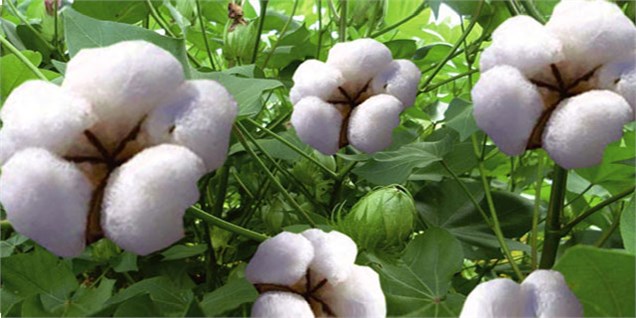Saffron

Saffron, called crodcus stativus, is a perennial herb having spherical onions and a brown membrane. Due to its beautiful color and its highly flavored aroma, it has many uses in the production of food, pharmaceutical and chemical products. Among its properties are vitality and elimination of depression and anxiety. To reduce fat and cholesterol, sedation, appetite, antispasmodic, prevention of heart disease and cancer, memory enhancement, reduction of blood pressure, asthma treatment, treatment. Diseases of the skin, urinary tract infection, jaundice, menstruation, abdominal distension, anesthetic and abdominal treatment. The natural coloring power of saffron, which is the result of the Crocin substance, has led to the replacement of abnormal and harmful colored materials in many countries in the food industry.
Due to the limited production and cultivation, saffron is required to produce one kilogram of dry saffron to 110/000 to 170/000 saffron, and a worker needs 40 hours to feed 150,000 flowers.
The history of planting this red gold in Iran is more than 3000 years old, and Iran with an average production of 200-230 tons per year, accounts for 90 to 92 percent of the world’s total production, with the highest in the world. Spain, with a mean production of 25 tonnes, is the second largest producer in Spain, with the Spuron Islands, Russia, Singapore, Malaysia, Japan, Taiwan, China, France, Italy, Germany, Australia and Greece, with a mean production of 25 tonnes, with a total third place. .
The main center of cultivation of saffron is cultivated in desert and low water areas of Iran, especially in the provinces of Cain, Zawah, Torbat Heydarieh, Torbat Jam, Taibad, Bakhrz, Gonabad, Neyshabur, Bajestan and Birjand. The history of saffron cultivation in this area dates back 700 years ago, which is considered to be the main income for Khorasani farmers and produces more than 170 tons of saffron per year, with the first place inside and outside the country. Also, in recent years, they have started cultivating this precious material in the provinces of Fars, Kerman, Lorestan, Qazvin (Alamut), Ardabil and Chakrar.
In general, saffron is divided into four main categories of Negin, Sargol, Shallal and Bunch, which is more popular among saffron saffron than other three. Because this kind of saffron is a pure stigma, and in addition to its rich aroma, taste and taste, it also has economic value. But for export mainly used saffron jeigner. Because this kind of saffron is more than healthy in comparison with sherla, it does not have a fracture.
Saffron production increased by about 60 percent in 95 compared to 94 percent, and in 1996, it maintained its incremental trend for the second consecutive year and managed to break the record for most of its exports over the past 10 years.
The three countries of Hong Kong, the United Arab Emirates and Spain are purchasing 77% of Iran’s saffron exports in 96 of the world’s best markets for selling this product. Saffron, called crodcus stativus, is a perennial herb having spherical onions and a brown membrane. Due to its beautiful color and its highly flavored aroma, it has many uses in the production of food, pharmaceutical and chemical products. Among its properties are vitality and elimination of depression and anxiety. To reduce fat and cholesterol, sedation, appetite, antispasmodic, prevention of heart disease and cancer, memory enhancement, reduction of blood pressure, asthma treatment, treatment. Diseases of the skin, urinary tract infection, jaundice, menstruation, abdominal distension, anesthetic and abdominal treatment. The natural coloring power of saffron, which is the result of the Crocin substance, has led to the replacement of abnormal and harmful colored materials in many countries in the food industry.
Due to the limited production and cultivation, saffron is required to produce one kilogram of dry saffron to 110/000 to 170/000 saffron, and a worker needs 40 hours to feed 150,000 flowers.
The history of planting this red gold in Iran is more than 3000 years old, and Iran with an average production of 200-230 tons per year, accounts for 90 to 92 percent of the world’s total production, with the highest in the world. Spain, with a mean production of 25 tonnes, is the second largest producer in Spain, with the Spuron Islands, Russia, Singapore, Malaysia, Japan, Taiwan, China, France, Italy, Germany, Australia and Greece, with a mean production of 25 tonnes, with a total third place. .
The main center of cultivation of saffron is cultivated in desert and low water areas of Iran, especially in the provinces of Cain, Zawah, Torbat Heydarieh, Torbat Jam, Taibad, Bakhrz, Gonabad, Neyshabur, Bajestan and Birjand. The history of saffron cultivation in this area dates back 700 years ago, which is considered to be the main income for Khorasani farmers and produces more than 170 tons of saffron per year, with the first place inside and outside the country. Also, in recent years, they have started cultivating this precious material in the provinces of Fars, Kerman, Lorestan, Qazvin (Alamut), Ardabil and Chakrar.
In general, saffron is divided into four main categories of Negin, Sargol, Shallal and Bunch, which is more popular among saffron saffron than other three. Because this kind of saffron is a pure stigma, and in addition to its rich aroma, taste and taste, it also has economic value. But for export mainly used saffron jeigner. Because this kind of saffron is more than healthy in comparison with sherla, it does not have a fracture.
Saffron production increased by about 60 percent in 95 compared to 94 percent, and in 1996, it maintained its incremental trend for the second consecutive year and managed to break the record for most of its exports over the past 10 years.
The three countries of Hong Kong, the United Arab Emirates and Spain are purchasing 77% of Iran’s saffron exports in 96 of the world’s best markets for selling this product.